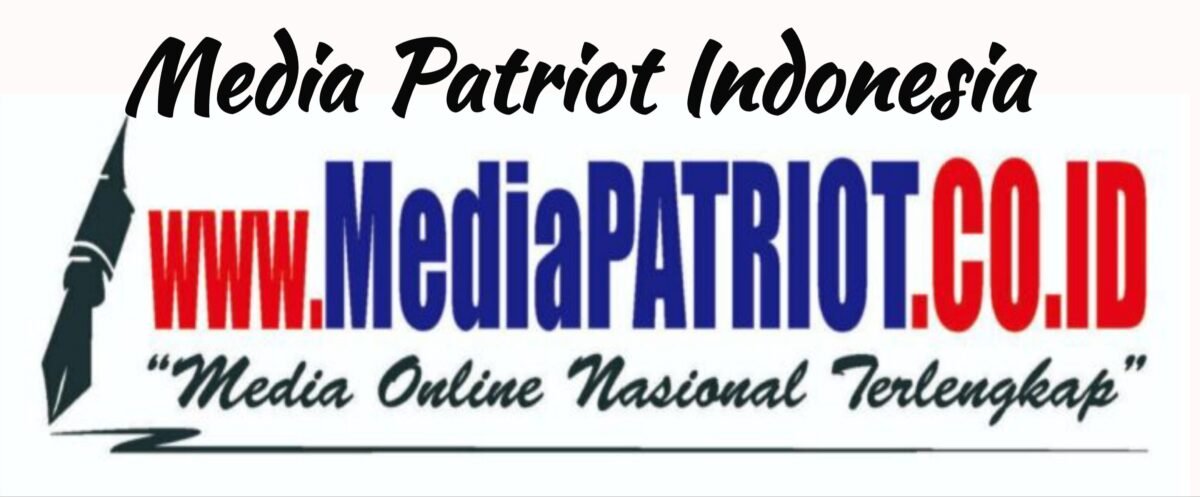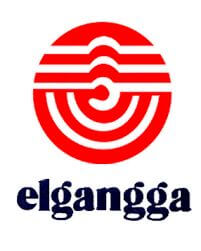Content
While the concepts discussed herein are intended to help business owners understand general accounting concepts, always speak with a CPA regarding your particular financial situation. The answer to certain tax and accounting issues is often highly dependent on the fact situation presented and your overall financial status. 46 FASB ASC Topic 275 provides that disclosures regarding certain significant estimates should be made when certain criteria are met.
- This would include everything from a three-year loan for a trailer to a 20-year loan for a building.
- The cost of purchasing gas does not improve or prolong the life of the truck but simply allows the truck to run.
- The discount rate used is reasonable on the facts and circumstances applicable to the registrant at the time the claims are settled.
- For example, sale commission expenses will be recorded in the period that the related sales are reported, regardless of when the commission was actually paid.
- Sometimes, a liability account may represent an obligation to deliver goods or services.
- Net pay is the employee’s gross earnings less mandatory and voluntary deductions.
For employers that provide benefits through OPEB plans that are administered through trusts that meet the specified criteria, the contribution schedules will provide measures to evaluate decisions related Employees: Assets, Expenses, Liability to contributions. The summary OPEB liability information, including ratios, will offer an indication of the extent to which the total OPEB liability is covered by resources held by the OPEB plan, if any.
Company
Usually, it comes to form the timesheets or other internal records within a company. The measurement period begins in the reporting period that includes the Act’s enactment date and ends when an entity has obtained, prepared, and analyzed the information that was needed in order to complete the accounting requirements under ASC Topic 740. During the measurement period, the staff expects that entities will be acting in good faith to complete the accounting under ASC Topic 740. The staff believes that in no circumstances should the measurement period extend beyond one year from the enactment date. Unless evidence exists to support a realizable value equal to or greater than the carrying value of the investment in equity securities classified as available-for-sale, a write-down to fair value accounted for as a realized loss should be recorded. Such loss should be recognized in the determination of net income of the period in which it occurs and the written down value of the investment in the company becomes the new cost basis of the investment.
It is important to understand the difference between “cost” and “expense” since they each have a distinct meaning in accounting.Cost is the monetary measure that has been given up in order to buy an asset. An expense is a cost that has expired or been taken up by activities that help generate revenue.
Disclosures
Noncurrent liabilities, also known as long-term liabilities, are due after more than a year. Your company would take on a long-term liability to acquire immediate capital to purchase an office building or computer equipment, for example, or to invest in new capital projects. Whether your business uses the aforementioned current or noncurrent assets, make sure your accounting personnel record them properly on the balance sheet.
The first step to reading a balance sheet is understanding the difference between assets and liabilities. For most businesses, non-current liabilities consist of loans from banks or other financial institutions. Since the business has yet to pay for the purchase of inventory, it accumulates accounts payable, a liability account.
- This equation was drilled into my head for a couple of years when I started my accounting major.
- Current liabilities are obligations that the business has to settle within one year.
- Questions have arisen regarding different approaches to the application of the accounting and disclosure guidance in ASC Topic 740 to such a situation.
- Machinery and equipment facilitate the production of goods that the business sells to generate revenue.
- 20 The staff first publicly expressed its view as to the appropriate accounting at the December 3-4, 1986 meeting of the EITF.
Interviewers usually include the owner veterinarian, the office manager, and/or a currently employed technician. Assuming that there are 4 candidates, and each interview takes at least 2 hours, and assuming an hourly rate of $25.00 for the office manager and $15.00 for the technician, the cost is $320.00. It’s been proven that “being yourself” has all sorts of benefits. Authenticity is known to contribute to both overall well-being and engagement. One study on the benefits of authenticity at work found that 80% of self-reported authentic employees believe authenticity improves the workplace. Have you worked for a manager who treated you like an expense or a problem that needed to be reduced? Have you worked for a leader that treated you like an important asset?
Ias 37
In a subsequent reporting period within the measurement period, Company Y was able to obtain, prepare and analyze the necessary information to complete the accounting under ASC Topic 740, which resulted in an adjustment to Company Y’s initial provisional amount to recognize its tax liability. It’s critical to understand the difference between assets and liabilities. A company lists its assets, liabilities and equity on its balance sheet. Assets are resources a business either owns or controls that are expected to result in future economic value. Liabilities are what a company owes to others—for example, outstanding bills to suppliers, wages and benefits due to employees, as well as lease payments, mortgages, taxes and loans. Therefore, to summarize the above and for the avoidance of doubt, in Company A’s financial statements that include the reporting period in which the Act was enacted, Company A must first reflect the income tax effects of the Act in which the accounting under ASC Topic 740 is complete. Company A would then also report provisional amounts for those specific income tax effects of the Act for which the accounting under ASC Topic 740 will be incomplete but a reasonable estimate can be determined.
Expenses and liabilities should not be confused with each other. One is listed on a company’s balance sheet, and the other is listed on the company’s income statement. Expenses are the costs of a company’s operation, while liabilities are the obligations and debts a company owes. Expenses can be paid immediately with cash, or the payment could be delayed which would create a liability. The wages expense account is a crucial part of the income statement. However, companies must segregate those expenses into several headings.
- Rather than asking for payment upon delivery, it invoices the restaurant for the price of the meat.
- IAS 37 Provisions, Contingent Liabilities and Contingent Assets outlines the accounting for provisions , together with contingent assets and contingent liabilities .
- Properly classifying assets is important for company leaders to have an accurate picture of key financial metrics such as working capital and cash flow.
- Some tangible and intangible assets are referred to as wasting assets, or assets that decline in value over a limited life span.
- Liabilities create an outflow of economic benefits in the future.
- Gain in-demand industry knowledge and hands-on practice that will help you stand out from the competition and become a world-class financial analyst.
- For example, machinery and equipment aid in the generation of revenue by facilitating the production of goods that the business will eventually sell.
In addition to disclosure of key assumptions used in the development of cash flow projections, the staff also has required discussion in MD&A of the implications of assumptions. For example, do the projections indicate that a company is likely to violate debt covenants in the future? https://accountingcoaching.online/ What are the ramifications to the cash flow projections used in the impairment analysis? If growth rates used in the impairment analysis are lower than those used by outside analysts, has the company had discussions with the analysts regarding their overly optimistic projections?
Example Of Expenses Vs Liabilities
They know that people have the capability to grow sales, satisfy customers, improve processes, innovate products, and do countless other things that add money to both the top and bottom line. As a CEO, I see daily examples of this in my business,Peak Demand. By accounting rules, the cost of workers is treated as an expense on the income statement. In fact, personnel expense is one of the highest costs a company incurs. Many managers see this sizable cost every month and conclude that people are expensive.They see people as a problem. By seeing people as a costly expense, these managers think that a quick way to more profits is by reducing people or salaries. They look at employees as an expense or a problem that must be reduced or eliminated.
Referring again to the AT&T example, there are more items than your garden variety company that may list one or two items. Long-term debt, also known as bonds payable, is usually the largest liability and at the top of the list. Liabilities create an outflow of economic benefits in the future. Therefore, some may think that the wages expense account falls within that category. However, that comes through a credit entry to the wages payable or accrued expenses accounts. In accounting terms, assets are company resources which havefuture economic value. Instead of seeing employees as a problem, these leaders see them as a valuable resource.
Need Help With Accounting? Easy Peasy
Unearned revenue is money received by an individual or company for a service or product that has yet to be provided or delivered. A contingent liability is an obligation that might have to be paid in the future, but there are still unresolved matters that make it only a possibility and not a certainty. Lawsuits and the threat of lawsuits are the most common contingent liabilities, but unused gift cards, product warranties, and recalls also fit into this category. Anderson is CPA, doctor of accounting, and an accounting and finance professor who has been working in the accounting and finance industries for more than 20 years.
A liability is something that is borrowed from, owed to, or obligated to someone else. It can be real (e.g. a bill that needs to be paid) or potential (e.g. a possible lawsuit). Liabilities refer to things that you owe or have borrowed; assets are things that you own or are owed. Kirsten Rohrs Schmitt is an accomplished professional editor, writer, proofreader, and fact-checker. She has expertise in finance, investing, real estate, and world history. Throughout her career, she has written and edited content for numerous consumer magazines and websites, crafted resumes and social media content for business owners, and created collateral for academia and nonprofits.
Payroll withholdings include required and voluntary deductions authorized by each employee. Withheld amounts represent liabilities, as the company must pay the amounts withheld to the appropriate third party. The employer is simply acting as an intermediary, collecting money from employees and passing it on to third parties. As the business grows, John begins to pay off some of that small business loan, reducing his liability. He is also able to take some of his profits and invest them in bonds and equities. These investments pay out interest over time, increasing his assets.
37 However, in some circumstances it is necessary to reflect, either in the historical financial statements or a pro forma presentation , related party transactions at amounts other than those indicated by their terms. Two such circumstances are addressed in Staff Accounting Bulletin Topic 1.B.1, Questions 3 and 4. Another example is where the terms of a material contract with a related party are expected to change upon the completion of an offering (i.e., the principal shareholder requires payment for services which had previously been contributed by the shareholder to the company). For all entities, in the financial statements that reflect the initial application of this guidance, the effect of the initial application should be reported in the carrying amounts of assets and liabilities as of the beginning of the annual period specified above.
Account Types
Current Liabilities of the Businessmeans the current liabilities listed on Schedule A. In general, a business would want to have more assets than liabilities. Thus, debit entries increase asset accounts, whereas they decrease liability accounts. The portion that is payable within the year is the current portion of a non-current liability. For example, a business pays its employees every 20th of the month. Current liabilities represent the financial obligations that a business has to address within a short amount of time, usually within a year. Since the business has already received payment, it’s obligated to deliver goods or services to the customer.
The discount rate used is reasonable on the facts and circumstances applicable to the registrant at the time the claims are settled. On the balance sheet, the book value of the asset is decreased by the accumulated depreciation.
To reflect wasting assets’ reduction in value over time, accountants reduce the assets’ value on the balance sheet by applying depreciation or amortization . Where a lot of people get confused is between assets and expenses. While asset expenditure goes on the balance sheet, expenses are reflected on the income statement. Physical assets include items such as inventory, equipment, and bonds. Like liabilities, businesses can have current and fixed assets .
Employees: An Asset Or A Cost?
Depending on the type of business, these can include inventory such as raw materials, direct material, or finished goods; or for retailers merchandise inventory and store supplies; or for service industries contracts in progress or work completed. The components of the net OPEB liability and related ratios, including the OPEB plan’s fiduciary net position as a percentage of the total OPEB liability, and the net OPEB liability as a percentage of covered-employee payroll. Liabilities like the payroll tax and the sales tax are sometimes referred to as trust fund taxes.
If assets are less than liabilities, a company has negative equity or owes more than it is worth. However, not all debt is bad, and having an asset-heavy balance sheet isn’t the ultimate goal for most companies. In fact, investors are increasinglystarting to prefercompanies with fewer physical assets as this can be a sign of agility and smarter use of capital. Inventory vs payables is another commonly intertwined set of assets and liabilities. Most long-term liabilities are amounts that need to be repaid more than one year in the future. The terms on these can vary widely, spanning from a couple of years to multiple decades.





